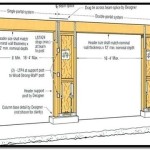How to Remove Oil and Grease from a Concrete Garage Floor Drain
A garage floor drain is essential for diverting water and preventing flooding. However, over time, it can become clogged with oil and grease, leading to drainage issues and unpleasant odors. Removing oil and grease from a concrete garage floor drain requires a systematic approach and the right tools. This article will provide a comprehensive guide on how to effectively clean your garage floor drain and restore its functionality.
1. Preparation and Safety
Before starting the cleaning process, it is crucial to take necessary safety precautions:
- Wear protective gear: This includes gloves, eye protection, and a mask to prevent contact with harmful chemicals. Gloves should be made of nitrile or latex for chemical resistance.
- Ventilate the area: Open windows and doors to ensure proper air circulation, especially when using strong cleaning agents.
- Disconnect power: If the drain is near electrical outlets, turn off the power supply to prevent any hazards.
- Clear surrounding area: Remove any obstructions or items around the drain to provide adequate working space.
2. Initial Cleaning and Removal of Loose Debris
The first step involves removing loose debris and oil from the drain. This can be done using the following methods:
- Scoop out solids: Use a small shovel or a dustpan to remove visible debris, leaves, or other solid materials from the drain.
- Use a shop vac: A wet/dry vacuum cleaner is a highly effective tool for removing loose debris, oil, and water from the drain. Ensure that the vacuum is equipped with a good-quality filter.
- Apply a degreaser: Apply a commercial degreaser to the drain and allow it to sit for a few minutes to loosen the grease. However, avoid using harsh chemicals that can damage the surrounding concrete.
3. Degreasing and Flushing
Once the initial debris is removed, the focus shifts to degreasing and flushing the drain. This process involves:
- Pouring a degreasing solution: Pour a commercial degreasing solution into the drain, ensuring it reaches the bottom. Follow the manufacturer's instructions regarding the amount and dwell time. Alternatives to commercial degreasers include baking soda and vinegar, or a mixture of dish soap and hot water.
- Scrubbing the drain: Use a drain snake or a wire brush to scrub the inside of the drain thoroughly. This will help break up stubborn grease and oil deposits. If the drain is accessible, use a long-handled brush to reach the bottom of the drainpipe.
- Flushing with hot water: After the degreasing solution has sat for the recommended time, flush the drain with hot water. The hot water will help dissolve the grease and carry away the loosened debris.
4. Deep Cleaning and Drain Inspection
For severe oil and grease build-up, a deep cleaning approach is necessary. Here's how to proceed:
- Apply a drain cleaner: Use a heavy-duty drain cleaner specifically designed for grease and oil removal. This product is typically available in liquid or gel form. Always follow the manufacturer's instructions, as some cleaners may require a specific dwell time.
- Use a drain snake: For more persistent clogs, a drain snake is an effective tool. Insert the snake into the drain and rotate it to break up the blockage. Be careful not to damage the drainpipe.
- Inspect the drainpipe: If the drain continues to be clogged, consider inspecting the drainpipe for any blockages further down. This may require professional assistance.
5. Preventing Future Clogs
Once the drain is clean, it is essential to implement measures to prevent future oil and grease build-up. Here are some effective strategies:
- Use a drain cover: A drain cover helps prevent larger debris from entering the drain and causing clogs. Choose a cover made of durable material that is resistant to oil and grease.
- Regular cleaning: Perform regular cleaning of the drain to remove any oil and grease accumulating over time. This could involve a weekly or monthly routine, depending on the frequency of oil spills or leaks.
- Avoid pouring oil down the drain: Dispose of oil and grease properly by collecting them in a sealed container and discarding them in a designated area for hazardous waste.
By following these steps, you can effectively remove oil and grease from your concrete garage floor drain. It is crucial to address any lingering odors or drainage issues. You can use a baking soda and vinegar mixture or a commercial odor neutralizer to eliminate unpleasant smells. If the drain continues to clog despite these measures, contact a professional plumber for assistance. Maintaining a clean garage floor drain is essential for proper water drainage and a healthy environment.

How To Clean Concrete Garage Floors From Oil Stains Rust

Removing Oil Stains In A Concrete Floor

How To Clean Your Garage Floor Homeserve Usa

Tips For Cleaning Your Concrete Garage Floor Richfield

How To Remove Oil Stains From Concrete Autozone

How To Clean Concrete Garage Floors From Oil Stains Rust

Oil Eater 32 Oz Overnight Stain Remover For Cleaning Stains On Concrete Driveway Pavers And Garage Floors 1 Pack Aod3232301 The Home Depot

How To Clean Concrete Garage Floors From Oil Stains Rust

How To Clean Concrete Garage Floors From Oil Stains Rust

Oil Stop Primer Coating For Stained Concrete Floors Chargar Corporation
Related Posts








